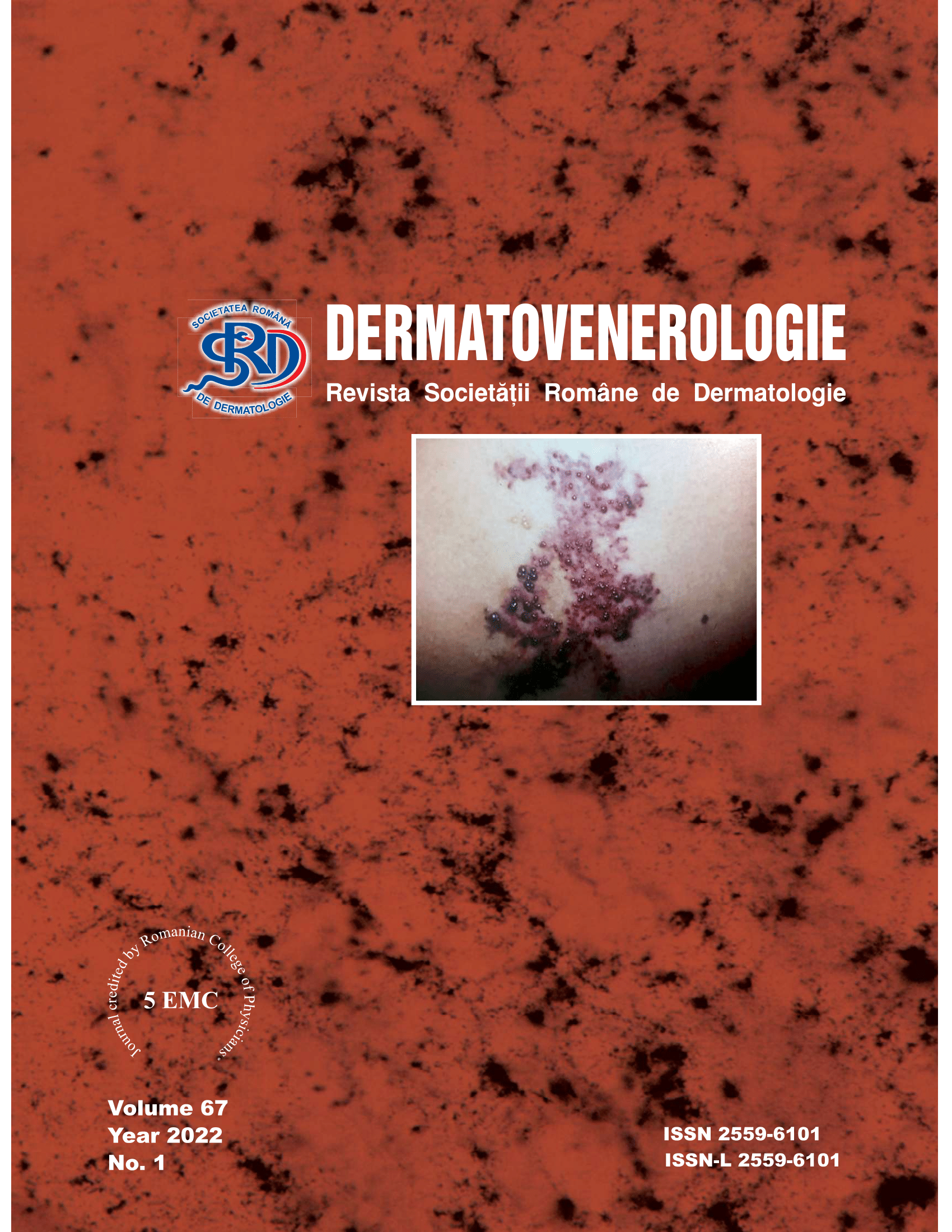Rezumat
Pilomatricomul (pilomatrixom) este o tumoră anexială care provine din matricea folicului pilos. Reprezintă cea mai frecventă tumoră foliculară, dar şi cea mai frecventă tumoră cutanată a copilului. Incidenţa apariţiei pilomatricomului evidenţiează două vârfuri principale: în primele două decenii ale vieţii şi în al şaselea deceniu.
Clinic se prezintă ca un nodul ferm sau indurat cu dimensiuni de aproximativ 1 cm cu evoluţie lentă localizat de obicei pe faţa şi uneori pe membrele superioare. Semnele clinice întâlnite în pilomatricom sunt: semnul cortului, ”teeter-tother sign”, semnul pliului cutanat ce permit stabilirea diagnosticului în 50% din cazuri. Histologic este caracteristică prezenţa „celulelor fantomă” care păstrează structura membranei celulare şi urme ale nucleilor. Dermatoscopic apar structuri alb-gălbui, strii albe şi structuri vasculare.
Evoluţia este benignă, iar tratamentul este cel chirurgical.


